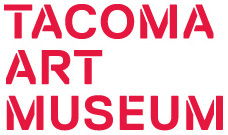Walt Kuhn
born Brooklyn, New York, 1877; died White Plains, New York, 1949
Through his commercial illustration work Kuhn became acquainted with Robert Henri (American, 1865 - 1929), John Sloan (American, 1871 - 1951), and other progressive artists in their circle. Kuhn assisted Henri and Sloan in organizing the Exhibition of Independent Artists in April 1910. The following year Kuhn and a small group of fellow artists founded the Association of American Painters and Sculptors (AAPS), which aimed to promote contemporary artists through non-juried exhibitions. With Arthur B. Davies (American, 1862 - 1928) as its president, the AAPS organized the International Exhibition of Modern Art, a major show that included representative works from avant-garde artistic movements in Europe. Known as the Armory Show, the exhibition opened in New York on February 17, 1913, and introduced cubism, fauvism, expressionism, and other forms of European modernism to American audiences.
Over the next decade, Kuhn experimented with a number of modern styles—including cubism and fauvism—as well as a variety of mediums. In 1925, following a brush with death caused by a duodenal ulcer, Kuhn devoted himself to developing a style of his own. He returned to Europe to study old master paintings and ancient art and minimized his involvement in other activities. By the end of the decade his signature portrait technique had emerged: Kuhn boldly rendered single figures against stark backdrops. His subjects—burlesque and vaudeville performers, circus acrobats, and clowns—reflected his love for the circus and the stage. Despite the colorful costumes and staged poses of his sitters, Kuhn’s portraits are dignified and psychologically probing. The artist also painted many still lifes in a similarly bold, geometric manner.
[source: National Gallery of Art]
Person TypeIndividual
Terms
- Brooklyn
- White Plains
born Buffalo, New York, 1920; died Tucson, Arizona, 2007
born Bridgewater, Connecticut, 1950; died Albuquerque, New Mexico, 2000
born Amsterdam, Netherlands, 1921; died Zurich, Switzerland, 2006
born Aberdeen, Washington, 1915; died Cape Cod, Massachusetts, 1991
born Buenos Aires, Argentina, 1919; died New York, New York, 2013
born Lock Haven, Pennsylvania, 1871; died Hanover, New Hampshire, 1951
born Cincinnati, Ohio, 1865; died New York, New York, 1929
born Winnipeg, Canada, 1887; died Seattle, Washington, 1964
born Fairmount City, Pennsylvania, 1910; died Grand Rapids, Ohio, 1987
born Kurume, Japan, 1876; died Tokyo, Japan, 1950
born New York, New York, 1897; died Manhasset, New York, 1977














